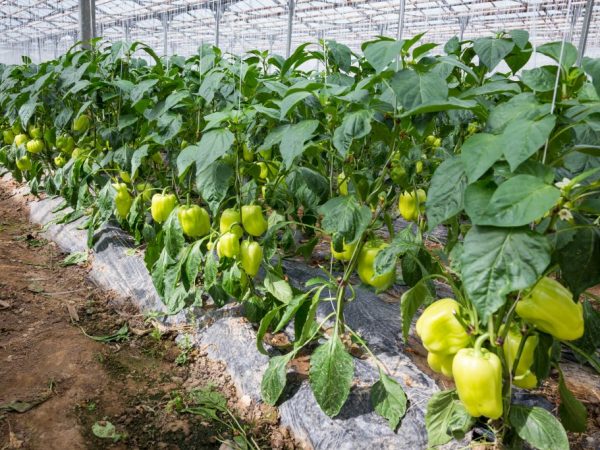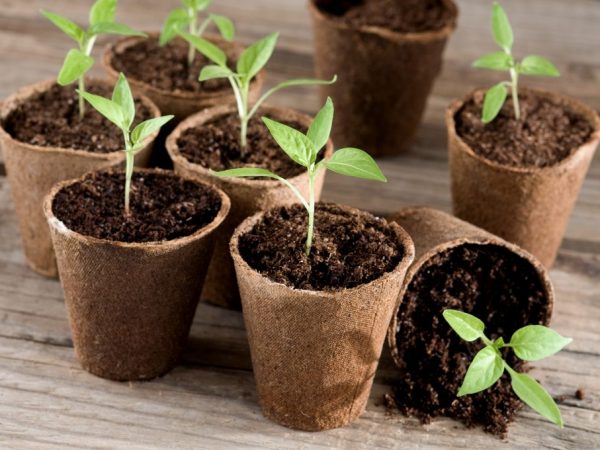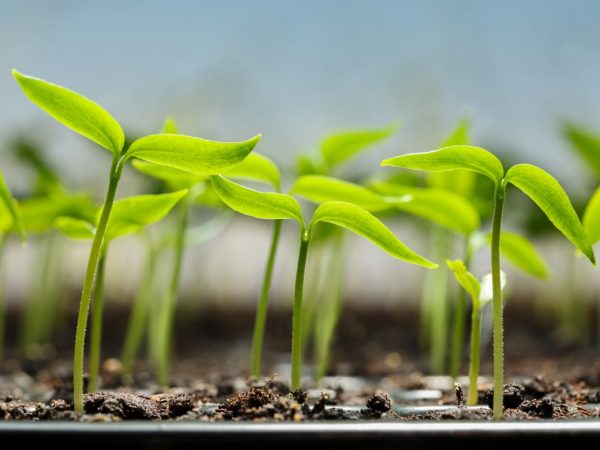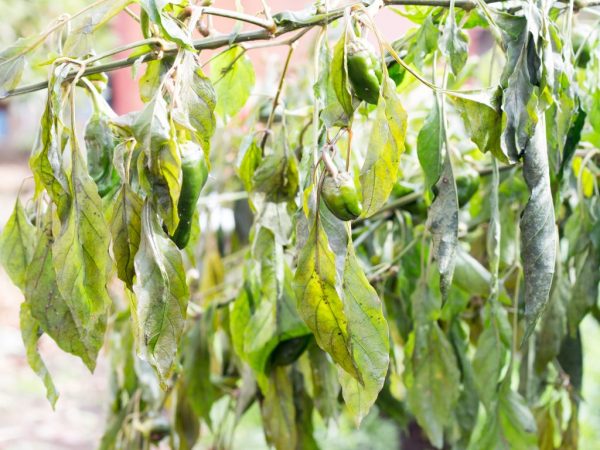Planting rules for salad peppers in the Urals
Planting pepper in the Urals is a rather troublesome task. In a harsh climate, a thermophilic plant requires special attention. We will tell you in detail how to properly land in the article.
- Growing rules
- Growing seedlings
- Cooking seeds
- Seedling soil
- Temperature
- First shoots
- Transfer
- Watering
- Fertilizers
- Hardening of seedlings
- Preparing warm beds
- Planting seedlings in a greenhouse
- Landing scheme
- Internal shelters
- Fertilizers
- Bush care
- Top dressing
- Soil composition
- Watering mode
- Pollination
- Formation of bushes
- Garter plants
- Diseases and pests
- Pests
- Diseases
- Harvesting
- Subtleties
- Conclusion

Planting rules for salad peppers in the Urals
Growing rules
To grow pepper in the Urals, you must follow the basic rules of agricultural technology:
- For sowing sweet peppers in the Urals, it is better to choose early or mid-season hybrids. This is due to the fact that these varieties are cold-resistant. The process of ovary formation on hybrid varieties is more intensive.
- Grown by seedling method.
- The timing of planting peppers for seedlings in the Urals is strictly observed.
- The finished seedlings must be planted in a greenhouse. This will help ensure a comfortable growing season for the plant in all weather conditions.
- The culture is treated with growth and development stimulants.
Growing seedlings
Planting fragrant peppers in the Urals begins with growing healthy seedlings. The timing of sowing seeds depends on which varieties are selected for planting. The growing season lasts over 100 days. It is recommended to start sowing pepper for seedlings in the Urals in the second half of February.
Cooking seeds
Agronomists recommend sowing only hybrid varieties of pepper for seedlings in the Urals. From early cultures planted:
- Winnie the Pooh;
- Montero;
- One;
- Amber;
- Agapovsky;
- Dobrynya Niktich;
- Gingerbread man;
- Knight.
From mid-season gardeners recommend planting:
- Atlant;
- Bogatyr;
- Alesha Popovich;
- Player.
Such types do not require treatment for the purpose of disinfection. Before sowing, it is better to soak the selected seeds in growth stimulants. Mival Agro, Ekogel, Emistim have proved themselves quite well. This will increase germination and speed up the formation of a healthy root system.
Seedling soil

Loose soil for pepper
Pepper doesn't like transplants. To reduce the stress from transplanting, planting peppers for seedlings in the Urals should be in light and loose soil.
Add a soil hydrogel to the selected sweet pepper planting mixture. So the plant will be protected from waterlogging or lack of moisture.
Temperature
During the entire period of seed germination, it is necessary to maintain a room temperature of 24 - 26 ° C. The first shoots will appear in 10-14 days.
If the thermometer ranges from 20 to 24 ° C, then the sprouts will appear no earlier than two weeks later.
If it is not possible to maintain the temperature in the room at the required level, it is better to make a mini-greenhouse.
First shoots
After the appearance of the first shoots, the temperature in the daytime is maintained at 24 ° C. The night temperature should be between 16 and 18 ° C.
Seedlings require a lot of light. Daylight hours should last from 12 to 14 hours. For this, the room is equipped with additional fluorescent lamps.
Transfer
When three true leaves have appeared on the seedlings of pepper, the plants should be transplanted. To do this, you need to prepare separate containers for each sprout. You need to plant pepper seedlings in fertile soil. You can treat it with a hydrogel. Before such treatment, the hydrogel should be soaked in a solution of mineral fertilizers.
Watering
Pepper loves moisture. Water the seedlings with warm, settled water. Waterlogging should not be allowed. Watering is recommended as needed.
Fertilizers
After transplanting seedlings, you need to start feeding the plant. The first fertilization is carried out 7-10 days after the pick. The break between feeding should be one week.
For fertilization during this period, it is best to use special complex preparations. They contain all the world and macronutrients. The composition of "Kemir Lux" received good reviews.
Hardening of seedlings
The process of getting used to seedlings to natural growth conditions begins in the second half of March. Every day, containers with seedlings should be taken out to a glazed loggia or a closed balcony.
Preparing warm beds

We plant only in prepared beds
Grown in warm beds. For refueling, manure is used along with straw and foliage, tops, and other organic matter.
The process of preparing the beds in the greenhouse takes place in several stages:
- The ridges are covered with a transparent film. This will speed up the thawing of the topsoil.
- The collected organic matter is scattered over the beds and spilled abundantly with a hot urea solution. The solution is prepared at the rate of one heaped tablespoon of dry fertilizer per 10 liters of water.
- The beds are again covered with foil and left for several days.
- On top of the organic matter, soil is poured enriched with mineral fertilizers and ash. The soil layer must be at least 10 cm.
Planting seedlings in a greenhouse
They begin to transfer the seedlings to the greenhouse in the last decade of May. At this time, there are already buds on the sprouts.
Seedlings should be watered abundantly. Then carefully remove it from the container and drop it into the prepared holes. It is not recommended to deepen seedlings.
Landing scheme
When planting seedlings in a permanent place, the planting scheme should be observed:
- Tall varieties are planted at a distance of at least 45 cm from each other. The distance between the rows is 70 cm.
- Low-growing hybrids are planted at a distance of 35-40 cm, row spacing is 70 cm.
Internal shelters
In the Urals, the probability of frost persists until mid-June. Agronomists recommend using additional shelters inside the greenhouse.
For this, arcs are installed, a dense material is pulled. On warm sunny days, the covering film is removed and returned to its place at night.
The additional shelter can be completely removed only in the third decade of June.
Fertilizers
Pepper loves fertile soil. Fertilization when transplanting pepper in the Urals depends on the condition of the soil.
To fertilize poor soils, a mixture of organic and mineral fertilizers is used.
Rotted compost is taken as organic. From ready-made preparations, you can use Kemira Lux.
Bush care

Good and strong seedlings
Planting peppers for seedlings in the Urals is to create comfortable conditions for the growing season of a crop at any stage. It is necessary to organize the care of the plant taking into account the characteristics of the selected variety.
Top dressing
Fertilization helps to increase the volume of the crop. Regular feeding of the crop is carried out as follows:
- Weekly root and foliar feeding. The use of complex fertilizers is recommended. The drugs must be used strictly in accordance with the manufacturer's instructions.
- Use of nutritional mixtures with a long lasting effect.Such fertilizers provide a constant supply of nutrients to the plant.
Soil composition
Pepper does not like heavy and dense soils. This leads to a lack of air in the root system of the crop.
Provide air permeability to the soil should be due to loosening additives. You can use sawdust, hay, chopped tree bark.
Mulching will help in solving this problem. The root zone is covered with a layer of foliage, straw or a layer of humus.
Watering mode
The wrong watering regime affects the plant:
- Lack of moisture leads to dropping of the ovaries;
- Excessive humidity provokes the development of diseases.
Slightly dried soil should serve as a signal for watering. Water the plants only at the root. For irrigation, use water heated to a temperature of 33 - 35 ° C.
Pollination
In the Urals, pollination is difficult. In order to prevent the ovaries from falling off, the plants are treated with fruit-forming stimulants. Specialty stores offer the drug Bud.
It is not recommended to plant both sweet and bitter peppers at the same time. This will lead to crossbreeding. The fruit will taste bittersweet.
Formation of bushes

Seedlings are susceptible to disease
The climatic conditions of the Urals do not allow harvesting on the numerous shoots of the plant. The formation of bushes stimulates abundant fruiting.
The bushes are formed as follows:
- Secondary shoots are removed as they appear.
- The number of top stepchildren depends on the amount of light and the length of the summer cottage season. Under unfavorable conditions, the pepper is formed into three stems.
- As the crop ripens, the fruiting shoots are removed.
- Shoots with signs of disease are removed.
Garter plants
Pepper is a rather fragile plant. The sprouts can break under the weight of the fruit. To prevent this, the plants are tied up.
The garter is carried out with a twine under the first fork. Further, each shoot is separate.
Planks are placed under the fruits that are located close to the ground. So they protect them from the development of rot.
Diseases and pests
Due to the peculiarities of the climate, planting crops in the Urals are susceptible to the invasion of ticks and aphids. Among the diseases, white and gray rot are dangerous to the plant.
Pests
Pest control begins at the first sign of harmful neighbors.
- During the period when there are no flowers and fruits yet, the plant is treated with insecticides. Among them, Aktellik has proven himself well.
- The control of pests that appeared in a later period requires the use of more concentrated formulations. You can use Fitover.
- The use of folk remedies does not give tangible results.
Diseases
Seedlings are affected by fungal diseases. Signs of the development of diseases are weeping spots on the leaves, fruits and at the base of the shoots.
For an effective fight against diseases, preventive measures are carried out:
- Observe the rules of crop rotation. For this, the soil in the greenhouses is changed annually.
- After harvesting, all residues are burned.
- The collection of affected fruits is carried out separately. They are being destroyed.
- Greenhouses are regularly ventilated to prevent condensation.
Harvesting
Pepper fruits are ready for consumption at the stage of technical maturity. During this period, the peppercorns are green.
Gardeners do not allow full ripening of fruits on the bushes. During the ripening period, new ovaries do not appear on the bushes. The harvest will be meager.
The collected technically ripe fruits will reach their biological maturity within a week. For this, the peppers are placed in a dark room and the temperature is maintained at least 20 ° C. If the temperature is lower, then the fruits will ripen in a month.
Subtleties
Harvesting is carried out according to the following rules:
- The fruits are harvested dry. Morning dew can cause pepper to rot during storage.
- Do not break off or try to pull the fruit off the bush.This will damage the plant. The pepper must be trimmed.
Conclusion
The cultivation of pepper in the Urals requires careful maintenance. Compliance with the rules of agricultural technology guarantees a bountiful harvest of aromatic peppers even in harsh climatic conditions.


